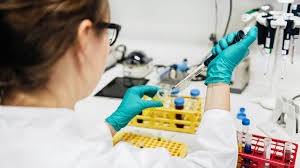Clinical trials for the development if new treatments are divided into several phases. There will often be 3 phases or as many as 5 in some cases. Each phase has a specific aim.

Phase one trials will often be performed on a small number of volunteers. This is usually the first time the drug has been trialled in humans and its main aims may be to assess safe doses of the drug, any side effects. The cohort may be made up of healthy volunteers and recruited slowly, however in some diseases such as cancers the cohort here may be made up of people with the condition. Phase one trials must be completed to ensure the safety of a drug prior to further phases which can then assess how useful or effective it is. Visit richmondpharmacology.com/specialist-services/adaptive-phase-i-studies for more information about adaptive phase 1 clinical studies.
Phase two trials can be planned if phase one studies have been deemed a success. Although not all side effects and risks may have been characterised as yet, the researcher will have a fair idea about the safety and value of the drug to now recruit a larger number of participants and learn more about the treatment. The primary aims of this phase may be to establish the effectiveness of the new treatment at treating, preventing the condition and refining the appropriate dosage for optimal therapeutic benefit. Placebo groups may also be used at this stage in order to provide a direct comparison for the treatment group.
Phase three trials can then be considered if the phase two results are promising. These involve much larger numbers of participants and are designed to provide much more detailed information such as the safety and effectiveness of the drug, decide which patents will benefit most from the new treatment and compare to and current treatments available. These studies may go on for several years to gather the necessary information prior to a new treatment being given approval for use in the general population.
Sometimes, as healthline note, there may even be additional phases zero and four. Phase zero may be even smaller in terms of cohort size than phase 1 (possibly fewer than 15 people), with very small dose of the new drug being given to simply ensure it is not harmful to humans. Stage four is added to the end of the list and occurs after the treatment has been granted approval by the food and drugs administration (FDA) or equivalent. This will consist of the long term monitoring of very large numbers of patients using the new treatment to determine more information about the safety and other benefits over the longer time frame.





